#database of student management system
Explore tagged Tumblr posts
Text
https://www.astiinfotech.com/erp-for-school/
Communication in a school/educational institution is chaotic. Every day hundreds of activities take place in a school and there is a need for a secure platform for school administration, parents and teachers to interact and communicate on a regular basis. School ERP acts as a reliable communication channel between parents, mentors and school administration through an app where information on homework, important notices, holidays and nutrition information about meals is shared seamlessly. School ERP Solution helps in the overall management of school operations. The software helps the school authorities to smoothly handle the school functionalities without any difficulties. It connects various departments like office, finance, examination, admission cell, etc. andatabase of student management system
simplifies the tasks.
#school management software#campus management system software#database of student management system#School erp
1 note
·
View note
Text
my old advisor was """restructured""" a while ago and my new one can be SO frustrating. they spent several emails working on the assumption that i had veteran benefits, for some reason, and in our most recent interaction they just full on ignored my question about whether a class i wanted to take would be viable or not. WHAT DO YOU THINK WE'RE HERE TO DO, MAN
#they want me to take Global Information Management Systems#which sounds hellishly boring and has a long and involved term project listed in the syllabus#and *I* want to take an advanced database class. my other database class fucking ruled i love SQL#and i think it sounds SO much more work-manageable to sort of mitigate my incredible fucking burnout#also it's the saturday before christmas now. will they even get BACK to me before the next classes start? are they done for the year??#i don't want to make someone work on christmas break but fuck. i wouldn't have to if they just acknowledged my question the first time#hush me#schoolblog#btw i appreciate that '''restructured''' meant ''we fired a bunch of people to be cheap :)''#and that it indicates my poor new advisor is probably overworked and juggling too many students#please direct your curses and etc evil energies at the school 👍
2 notes
·
View notes
Text
Cloud-Based Online Student Management Systems: What You Need to Know
Managing a school’s operations has never been more complex. From tracking student performance to maintaining financial records, administrators juggle countless responsibilities. Enter cloud-based online student management systems — an innovation transforming education administration.
What is a Cloud-Based Online Student Management System?
A cloud-based online student management system is a software solution hosted on the internet, enabling schools to manage academic and administrative tasks from any device with internet access. Unlike traditional software that requires local installations, cloud-based systems offer flexibility, scalability, and cost-effectiveness.
Key Benefits of Cloud-Based Systems
1. Accessibility Anytime, Anywhere
Administrators, teachers, and parents can access data in real-time from any location, ensuring seamless communication and decision-making.
2. Cost-Effective Solution
Cloud-based systems eliminate the need for expensive hardware and maintenance. Schools only pay for the features they use, reducing overall costs.
3. Data Security
Leading providers offer robust encryption and regular backups, ensuring student data is secure and compliant with privacy regulations.
4. Scalability
Whether you manage a small school or a large institution, cloud systems grow with your needs, offering custom modules to fit your requirements.
5. Automatic Updates
Say goodbye to manual software upgrades. Cloud-based systems update automatically, ensuring you always have the latest features.
Must-Have Features
When selecting a cloud-based system, look for:
1. Student Data Management: Centralized storage for grades, attendance, and personal details.
2. Parent-Teacher Portals: Simplified communication and progress tracking.
3. Financial Tools: Fee management, billing, and reporting modules.
4. Mobile Accessibility: Responsive design for use on smartphones and tablets.
Why Schools are Embracing Cloud Solutions
In an era of remote learning and digital transformation, cloud-based systems are no longer a luxury but a necessity. Schools benefit from:
- Streamlined operations.
- Enhanced collaboration among teachers, parents, and students.
- Future-ready infrastructure adaptable to changing educational demands.
Final Thoughts
Adopting a cloud-based online student management system is a step toward smarter, more efficient school administration. By investing in the right platform, schools can not only reduce administrative burdens but also create a better learning environment for students.
This blog is brought to you by openSIS, a trusted provider of cloud-based student management solutions. Discover how we can help your school streamline its operations at www.opensis.com.
#Online Student Management System#Online Student Information System#Virtual School Software#Student database management system
0 notes
Note
HII i'm loving your works omg! could i ask you to make a bronya!yuu or silverwolf!yuu? (you can choose just one if you want). take care or yourself and do your work at your time, no need to rush! :D
I decided to do two but sorry if bronya is so short , aww thank you.
𝐖𝐇𝐀𝐓 𝐈𝐅 ����𝐈𝐋𝐕𝐄𝐑 𝐖𝐎𝐋𝐅!𝐘𝐔𝐔 𝐖𝐀𝐒 𝐈𝐍 𝐓𝐖𝐒𝐓🐺👾


A member of the Stellaron Hunters and a genius hacker. She sees the universe as a massive immersive simulation game and has fun with it. She's mastered the skill known as "aether editing," which can be used to tamper with the data of reality.
Silver wolf!yuu is rarely known in nrc, they prefer to stay behind the scenes only a few students know about their existence.
Rarely appear in public, mostly using their holograms to go to school. It's pretty rare to see them actually outside of the ramshackle dorm.
Has a habit of disappearing and appearing, imagine your standing there and suddenly a hologram or game particles appear and silver wolf!yuu appear beside you.
Every time Crowley manages to piss them off, silver wolf!yuu would choose an area to vandalize at school, and some students manage to learn when you take a photo of it you can get a hidden message from silver wolf!yuu about Crowley.
silver wolf!yuu has a habit of collecting data about students, they have a database about their past, quirks, strength and weakness.
A very famous gamer in twst known to beat unbeatable levels of any game in twst and they use a fake alias. They hear about idia ranting towards Ortho about their game persona and find it funny. And join many game tournaments and win them easily and they gained money for this.
The ignihyde dorm is their second home, the dorm has good wifi for gaming. And manage to get close to idia and Ortho and talk about games with each other.
Their uniform has technology imbued to it. allowing them to access and project holographic screens on command. These are mainly used for quick data checks, sending encrypted messages, or pulling up maps and files in real-time without needing a handheld device.
They possessed a higher advanced technology than anything in twst. Also they use their aether hacking to change the ramshackle to their liking.
In battle, they would dominate due to having a lot hex on their side, they can hack into reality and get in the students file and remove the overblot. Or use it to discover and apply weakness towards the enemy.
They also have a mysterious job, operated as a freelancer, known for taking on jobs that require skill, secrecy, and the ability to circumvent the most complex security systems. Their reputation was built on their expertise in digital infiltration, information gathering, and high-stakes hacking, often working for those willing to pay for their skills without asking too many questions. most of their clients seem to be suspicious or not morally good.
Notorious for being a phone addict always playing their game outside or inside of class and when they were asked a question they immediately answered it correctly.
They also have a talent of engineering zoning out imagining about creating new tech ideas, mods and strategies for games.
𝐖𝐇𝐀𝐓 𝐈𝐅 𝐁𝐑𝐎𝐍𝐘𝐀!𝐘𝐔𝐔 𝐈𝐒 𝐈𝐍 𝐓𝐖𝐒𝐓 ❄️🌬️


Heir apparent to the Supreme Guardian of Belobog. She possesses pride befitting of a princess, but also the determination and integrity of a soldier.
Bronya!yuu is the embodiment of what a leader and an heir should be. Their charisma is able to encourage people and lead them towards the right path.
As well a dignified soldier bronya!yuu may look weak but are by far one of the most efficient in hand to hand combat, able to pin down a student who is bigger than them.
Has a tendency to reminisce about their mother and would just sit there and reminisce about them and grim would always be there to comfort them.
An expert marksman, rook and them once a week have a contest with each other who ever is the better marksman.
They are by far one of vil favorite, they are dignified, elegant and strong like a soldier and a princess should be, they also inspired epel to be more like them he admired them and have lessons with him where they tutor him.
They are patient and calm in the heeds of battle always believing as being one in harmony they could work together and forge a more successful path, as well being the back bone of a battle planning and helping them behind the scenes by shooting at the enemy
Them and Lilia would usually trade military tactics to each other over a cup of tea and also discussing other topics
They usually get burned out and they don't know when to rest, since they always have to keep a princess like dignity many of the first years notice and comfort them during hard times.
Bronya!yuu abilities allow them to enhance their comrade ability extremely towards its potential, as well to summon winter soldiers to help them but it takes a lot of energy.
Have a love and interest in history, usually seen in the library studying about twst long history and enjoy talking about them to their friends.
As well being a top student, always studying and getting good grades without any issue and always be respectful towards people
By far have a good reputation at school for being a capable leader, many students admire their discipline, while others have some sort of a sense of rivalry with them.
#twisted wonderland#not canon#twst scenario#disney twst#twst headcanons#twst wonderland#twisted wonderland yuu au#twst mc#twst yuu au#twst x reader#twst x hsr#twst yuu#bronya!yuu#silver wolf!yuu#hsr#hsr crossover#hsr headcanons#silver wolf#bronya#honkai star rail#hsr headcanon
172 notes
·
View notes
Text
Olga Lautman at Unmasking Russia:
It has been a long 86 days— and feels like a decade—since Trump returned to power. In that time, I’ve been documenting, day by day, the systematic capture of American institutions and the collapse of democracy in my Trump Tyranny Tracker. Not just the headlines, but patterns. While most of the media remain trapped in a cycle of chasing the latest headlines—tariffs one day, SignalGate the next—I’ve been focused on the patterns. And what appears to be taking shape is far more dangerous as I see strong indications that Trump may be laying the groundwork for a centralized surveillance state. I can’t say that definitively but we do need to pay close attention. At the center of it all is unauthorized DOGE—run by Musk and a team of unvetted operatives, some with deeply troubling histories. His operatives have embedded themselves across the federal government, bypassing standard hiring processes, background checks, and oversight. We were gaslit that DOGE was a project to cut waste, root out fraud, and “modernize” government systems but I have always believed that is a cover story. But cover for what? Yes, part of DOGE’s mission appears to be dismantling federal agencies—but that’s just the surface. What I believe Musk is doing is using DOGE as cover to build a massive data collection and profiling infrastructure—one that will have chilling consequences for dissent, journalism, and democracy itself. They had years to plan for this moment, anticipating Trump’s return to power. And from day one, we saw it—the lightning speed with which they moved, as if the blueprint had been ready all along. And this is not theoretical. It’s already being tested—in plain sight.
Surveillance as Strategy: The Russia Playbook
What Trump and Musk appear to be building looks eerily familiar. In fact, it mirrors something in authoritarian regimes— like Russia and China. One of Putin’s first moves after taking power was to consolidate the Russian state by installing loyalists in every key position—not just politically, but across the entire informational apparatus. Like the Soviet dictators he emulates—and as a former KGB officer—Putin understands that power isn’t just maintained through brute force, but through data, surveillance, and fear.
Russia has always operated as a surveillance state. From the Soviet era to the present day, its internal security services have been fixated on identifying, isolating, and crushing dissent—both within the government and across society. The only thing that’s changed is the sophistication of the tools. Russia’s government databases were merged under the pretext of national security. State contracts were funneled to loyal oligarchs. Surveillance infrastructure became the regime’s central nervous system. This looks to be the blueprint Musk and Trump are now following. Musk’s unvetted operatives—most of them political loyalists with no public service background—have been given access to internal sensitive systems of key U.S. government agencies. These include the Social Security Administration, the Department of the Treasury, the Office of Personnel Management, and, most recently and alarmingly, the IRS. Each holds massive amounts of our sensitive personal data— tax records, income histories, medical information, demographic data, and backgrounds. Individually, these data points reveal a lot. Combined? They offer a total profile—an AI-searchable and cross-referenced system— built to track every American’s financial, personal, and political life.
Testing Grounds: The Federal Workforce
This surveillance apparatus isn’t just being tested on immigrants or international students, it’s being tested on federal workers themselves. According to The Guardian, employees at the Department of Veterans Affairs were warned that their virtual meetings were being secretly recorded—and advised to be cautious about voicing any disagreement with Trump’s decisions. At the State Department, IT staff reportedly began installing monitoring software on employee devices. In response, some staffers—fearing hidden microphones—resorted to blasting white noise or turning on breakroom sinks to muffle their conversations.
At the EPA, a partner water management organization sent out an internal warning that all calls, calendar entries, and meetings with EPA staff were being monitored by an AI tool—one that had appeared, unannounced, as a notetaker in their virtual calls. While the agency denied it, staff say they were explicitly told that DOGE was scanning communications for any signs of “anti-Musk,” “anti-DOGE,” or “anti-Trump” sentiment. At USAID, leadership handpicked by Trump’s White House was reportedly caught reading private group chats. Employees said that their acting administrator—the same person who handled the agency’s IT—abruptly appeared in a group chat of over 40 contractors. The breach was so blatant that staff began abandoning official systems altogether. Eventually, USAID’s website was taken offline without explanation.
The Mass Purge: Chaos by Design
I also believe the ongoing mass purges of federal workers serve multiple functions. First, they create chaos inside the agencies, eroding institutional memory and making it easier to rewrite processes without oversight. Second, they eliminate career officials—many of whom might resist or expose what Musk and his operatives are actually doing behind the scenes. And third, they overwhelm the media with scandalous and likely illegal firings, distracting the public while core government services collapse and the surveillance infrastructure is quietly built in the background. But there’s more. These purges send a chilling message to the rest of the federal workforce: fall in line or you’re next. They’re not just dismantling agencies—they’re replacing public service with loyalty tests. The result is a hollowed-out government filled with fear, silence, and political operatives. And that’s exactly the point. When institutions are weak and morale is broken, authoritarian power consolidates faster. [...]
Targeting International Students and Immigrants: Testing the System
Also, last week, USCIS announced it would begin screening immigrants’ social media accounts for antisemitism, which would be used as grounds to deny visas and green cards. DHS issued a statement declaring: “There is no room in the United States for the rest of the world’s terrorist sympathizers... You are not welcome here.” This isn’t solely about protecting Jewish Americans or Jewish students— who face real threats. Rather, it appears to be an effort to weaponize the issue as a political shield for an anti-immigrant, anti-dissent agenda. Jewish advocacy groups like Bend the Arc quickly condemned the policy, calling it what it is: a smokescreen for cruelty and repression, not a good-faith attempt to combat antisemitism. And this isn’t theoretical. Immigrants are already being disappeared, social media scanned, and green card holders detained. DHS has reportedly requested IRS data on over 7 million immigrants, and ICE is preparing to act on that data.
Olga Lautman has a very frightening yet truthful story about how the Trump/Musk Regime’s use of surveillance as a tool to curb dissent.
#Trump Administration II#DOGE#Authoritarianism#Privacy Act of 1974#Elon Musk#Donald Trump#Olga Lautman
27 notes
·
View notes
Text

Elite Commander Poki redesign and Invader Training Headcanons. (Futher info under cut)
Elite Commander Poki was Almighty Tallest Miyuki's second in command and most trusted advisor- As such she continues to wear the Irken Elite Miyuki Branding even after her death.
Her reassigning following the Initiation of Red and Purple involved the training of worthy soldiers to become Invaders for the upcoming Operation Impending Doom.
Much like Irken Slave Drivers and other Irkens in commanding positions, she wears a suit that makes her appear taller than she really is.
She's a no nonsense drill sergeant type- but below the surface she still hasn't gotten over Miyuki's death and often sees her failing students as a disgrace to her awesome legacy.

Contrary to what you might think, Irken defects are actually quite common.
The Control Brain's Irken Bioengineering Program contains an intentional margin of error- Allowing new or odd genetic properties to emerge and potentially be added into the base database for wide spread implementation.
The term "defect" however is reserved for specimens with genetic irregularities that are seen as problematic to the overall objective of the Empire.
But seeing as how defect Irkens are relatively common, it's no surprise that there were quite a few of them who were trained to be Invaders.

These 4 are proper defects in the sense that their irregularities are not seen as particularly useful.
Zim
•Intense and obessive thought patterns, for lack of a better word, Irken neurodivergency. Brilliant in some respects, but moronic in others.
•Capable of parental love from both ends of the spectrum. Looks up to his leaders much like one would a distant parent, and shows intense affection for his minions.
(This is very odd as most Irkens just see their helpers as tools and affection is looked down upon.)
•Selective hearing and auditory processing problems.
Skoodge
•Capable of romantic love and friendship. He is hated for this and seen as "soft"
•In love with ZIM specifically. He has such terrible taste that it counts as a separate defect.
•On the heavier side. He is seen as ugly for this but it actually makes him much more resilient to physical damage and can go without his Pak for much longer than 10 minutes.
(This is me attempting to justify that time they forgot to draw his Pak for a whole episode lmao)
Grinn
•Warped antennae. This distorts her senses and makes her very irritable to certain noises.
•A natural aversion to taking orders and a frequent questioner of the Empire's System.
•Covered in horrible red blemishes. She has an overactive immune system that manifests in extreme bodily reactions to minor stimuli.
(This is one of the worst defects to have when you drop out of the Invader Program and work in a literal garbage chute)
•Writes poetry
Skutch
•Actually evil. Like. Even by Irken standards.
•Will set things on fire for seemingly no reason.
•Rarely ever speaks and when he does it's incredibly vulgar. The only Irken that says Fuck.
•Has no soul, wants or desires. He only lives for the mild fascination elicited from watching the life drain from a living thing's eyes.

These 4 are seen to have more useful defects- Or in other words, they're "Gifted" Irkens. Okay not Gustavo but because he's tall he managed to not get lumped in with the last 4.
Grenty
•Intense regenerative properties. In fact, she struggles to control it properly and will just randomly grow new limbs.
Her regeneration is so good that she is essentially impervious to damage so long as her Pak remains intact.
•Irregular blood viscosity. Needs to be regulated with a patch.
•Overbite.
Mote
•Likes smooth Jazz
•Oversized antennae- He has insanely good sense of his surroundings and is tormented by having to accidentally hear everyone's horrible secrets he never wanted to know.
•Very frail
Fleep
•Abnormally physically powerful. She could break the arms of every other trainee here.
•Sort of capable of friendship but only the kind shared between High School Prom Queens and their evil lackeys.
•Otherwise very competent and professional.
Gustavo
•I hate Gustavo
•He's really friendly and normal by human standards but an UTTER FREAK by Irken standards.
•Joined the Invader program because he wants something to fall back on when he becomes a freelance advertising consultant.
•Gustavo must die.
•Is tall enough that the bias of the system has prevented him from being killed. (Unfortunately)
ALSO WORTH NOTING-
Zim is responsible for the deaths of most of the people here- The only ones to survive his Operation Impending Doom screw up were Skoodge, Skutch, and Grinn.
(Grinn never became a real Invader, Skoodge is basically immortal, and even Zim knows not to mess with Skutch.)
I imagine that most of the Invaders assigned to Operation Impending Doom 2 were from the generation after Zim and were still in training during the first operation.

Bonus content of Skutch setting fire to the wildlife
#invader zim#redesign#zim#elite commander poki#invader zim headcanon#iz headcanons#skoodge#skutch#grinn#invader zim oc
153 notes
·
View notes
Note
can u talk a bit more about working as a bibliographer? like what does that actually entail?
so the bibliography i worked at was affiliated with the major academic professional society of my subfield, and the society sponsors the bibliography as a kind of sister publication to their journal. this means 1) we were almost exclusively grant-funded, and 2) the staff positions at the bibliography go to grad students. there are jobs in bibliography and related information sciences that are not exclusive to academics/grad students, but i can't really tell you anything about them personally; i had this job as a graduate research assistant (ie this was what i did to get my paycheck for two years instead of TAing).
anyway the purpose of a bibliography like this that's affiliated with a journal or subfield is usually to aggregate data on what's published in that journal or subfield. ours was aimed at capturing the whole subfield. so, the bulk of the staff job is to comb through recent academic publications (journal articles & books) and pull anything that's topically relevant. we add the abstract and metadata to the bibliography (meaning basically a searchable database) and then we do subject tagging. this is the most fun part because you have to think about how knowledge is categorised and what's most useful to a user and whatnot.
so like let's say i'm entering an article from the journal of the history of psychiatry. i already pulled the metadata from the online journal listing and put it through zotero, which then talks to the bibliography's back end. i do the authority control (link it with the author's other publications in our bibliography, and with some external identity profile like viaf or orcid). i link it to the journal in our database and make sure it has the right date, page numbers, etc. this article is about philippe pinel, so its main category tag is probably 'psychiatry - 19th century'. then i aim for 5–10 additional subject tags, maybe 'france, metropolitan', 'psychiatric hospitals and institutions', 'therapy and therapeutic methods', 'philosophy of medicine', 'nosology and diagnosis', 'pitié-salpetrière hospice', etc.
once this is all entered, the article is searchable by any of its metadata, by going to the author's profile in our database, or by those subject and category tags. institutions (universities, libraries, hospitals, etc) all have their own authority controls too. you can browse the database by data, by subject tag, by searching keywords, etc; it also has a few visualisation tools that show strongly associated subject tags, histograms of a person's or publisher's history of publication, etc. this all means that things are more easily discoverable than they might be, and once you've found them you can also browse related things easily, or look at some provisional info on the state of publications in the field.
because this bibliography was affiliated with a journal, we also used to publish a yearly print edition with the entries published in the last year (this was satisfying to hold but honestly way less functional than the online database version lol) and we also published a special edition of bibliographic / historiographic essays on pandemics that i worked as managing editor for. idk how common this would be at other kinds of bibliographic job positions; we used the same publisher as the sister journal, so mostly all i had to do was correspond with people and deal with typesetting. anyway once that was published we also added those articles to the bibliography itself too.
anyway super fun job tbh, like a lot of it is data entry but haggling over subject tags was honestly enjoyable if you like that kind of thing. i lost the battle to add "total institutions" as a subject tag but won when i said we needed to revamp our system for entries dealing with weight management; as a result those subject tags are now clearer and more useful, and capture scientific discourses about both 'underweight' and 'overweight'. our best tag imo was "controversies and disputes", which was like a catch-all for any time there was some kind of haterism in the literature. it kind of changed how i view knowledge categorisation (like, the process; philosophy-of) and because we spent so much time reading abstracts to tag them, we would basically have walking encyclopedic knowledge of recent publishing in the field.
some of this functionality can ofc be replicated in library catalogues or google scholar or whatever, but the real value-add is the subject tagging and the relationships between those terms; this is where the bibliography is useful both for finding things and for showing an additional layer of information about the field and publishing in it. lots of academic fields have some equivalent of this, although i will say that our database was generally better (in the sense of more data and useful detail) than others i've used; it was a well-funded project run by a very dedicated prof who's been doing this for over 20 years now, and that continuity and institutional memory is really paying off for it.
but yeah if this is generally something that interests you, like i said, this is really just one specific form of bibliographic work. definitely look into what else is out there (i dunno how much of this would require a degree like an mlis even) and see what you think :)
22 notes
·
View notes
Text
The Trump administration, working in coordination with Elon Musk’s so-called Department of Government Efficiency, has gutted a small federal agency that provides funding to libraries and museums nationwide. In communities across the US, the cuts threaten student field trips, classes for seniors, and access to popular digital services, such as the ebook app Libby.
On Monday, managers at the Institute of Museum and Library Services (IMLS) informed 77 employees—virtually the agency’s entire staff—that they were immediately being put on paid administrative leave, according to one of the workers, who sought anonymity out of fear of retaliation from Trump officials. Several other sources confirmed the move, which came after President Donald Trump appointed Keith Sonderling, the deputy secretary of labor, as the acting director of IMLS less than two weeks ago.
A representative for the American Federation of Government Employee Local 3403, a union that represents about 40 IMLS staffers, said Sonderling and a group of DOGE staffers met with IMLS leadership late last month. Afterwards, Sonderling sent an email to staff “emphasizing the importance of libraries and museums in cultivating the next generation’s perception of American exceptionalism and patriotism,” the union representative said in a statement to WIRED.
IMLS employees who showed up to work at the agency on Monday were asked to turn in their computers and lost access to their government email addresses before being ordered to head home for the day, the employee says. It’s unclear when, or if, staffers will ever return to work. “It’s heartbreaking on many levels,” the employee adds.
The White House and the Institute of Museum and Library Services did not immediately respond to requests for comment from WIRED.
The annual budget of IMLS amounts to less than $1 per person in the US. Overall, the agency awarded over $269.5 million to library and museum systems last year, according to its grants database. Much of that money is paid out as reimbursements over time, the current IMLS employee says, but now there is no one around to cut checks for funds that have already been allocated.
“The status of previously awarded grants is unclear. Without staff to administer the programs, it is likely that most grants will be terminated,” the American Federation of Government Employee Local 3403 union said in a statement.
About 65 percent of the funding had been allocated to different states, with each one scheduled to receive a minimum of roughly $1.2 million. Recipients can use the money for statewide initiatives or pass it on to local museum and library institutions for expenses such as staff training and back-office software. California and Texas have received the highest allocated funding, at about $12.5 million and $15.7 million, respectively, according to IMLS data. Individual libraries and museums also receive grants directly from IMLS for specific projects.
An art museum in Idaho expected to put $10,350 toward supporting student field trips, according to the IMLS grant database. A North Carolina museum was allotted $23,500 for weaving and fiber art workshops for seniors. And an indigenous community in California expected to put $10,000 toward purchasing books and electronic resources.
In past years, other Native American tribes have received IMLS grants to purchase access to apps such as Hoopla and Libby, which provide free ebooks and audiobooks to library patrons. Some funding from the IMLS also goes to academic projects, such as using virtual reality to preserve Native American cultural archives or studying how AI chatbots could improve access to university research.
Steve Potash, founder and CEO of OverDrive, which develops Libby, says the company has been lobbying Congress and state legislatures for library funding. “What we are consistently hearing is that there is no data or evidence suggesting that federal funds allocated through the IMLS are being misused,” Potash tells WIRED. “In fact, these funds are essential for delivering vital services, often to the most underserved and vulnerable populations.”
Anthony Chow, director of the School of Information at San José State University in California and president-elect of the state library association, tells WIRED that Monday was the deadline to submit receipts for several Native American libraries he says he’d been supporting in their purchase of nearly 54,000 children’s books using IMLS funds. Five tribes, according to Chow, could lose out on a total of about $189,000 in reimbursements. “There is no contingency,” Chow says. “I don’t think any one of us ever thought we would get to this point.”
Managers at IMLS informed their teams on Monday that the work stoppage was in response to a recent executive order issued by Trump that called for reducing the operations of the agency to the bare minimum required by law.
Trump made a number of other unsuccessful attempts to defund the IMLS during his first term. The White House described its latest effort as a necessary part of “eliminating waste and reducing government overreach.” But the president himself has said little about what specifically concerns him about funding libraries; a separate order he signed recently described federally supported Smithsonian museums as peddling “divisive narratives that distort our shared history.”
US libraries and museums receive support from many sources, including public donations and funding from other federal agencies. But IMLS is “the single largest source of critical federal funding for libraries,” according to the Chief Officers of State Library Agencies advocacy group. Libraries and museums in rural areas are particularly reliant on federal funding, according to some library employees and experts.
Systems in big metros such as Los Angeles County and New York City libraries receive only a small fraction of their budget from the IMLS, according to recent internal memos seen by WIRED, which were issued in response to Trump’s March 14 executive order. "For us, it was more a source of money to innovate with or try out new programs,” says a current employee at the New York Public Library, who asked to remain anonymous because they aren’t authorized to speak to the press.
But the loss of IMLS funds could still have consequences in big cities. A major public library system in California is assembling an internal task force to advocate on behalf of the library system with outside donors, according to a current employee who wasn’t authorized to speak about the effort publicly. They say philanthropic organizations that support their library system are already beginning to spend more conservatively, anticipating they may need to fill funding gaps at libraries in areas more dependent on federal dollars.
Some IMLS programs also require states to provide matching funding, and legislatures may be disincentivized to offer support if the federal money disappears, further hampering library and museum budgets, the IMLS employee says.
The IMLS was created by a 1996 law passed by Congress and has historically received bipartisan support. But some conservative groups and politicians have expressed concern that libraries provide public access to content they view as inappropriate, including pornography and books on topics such as transgender people and racial minorities. In February, following a Trump order, schools for kids on overseas military bases restricted access to books “potentially related to gender ideology or discriminatory equity ideology topics.”
Last week, a bipartisan group of five US senators led by Jack Reed of Rhode Island urged the Trump administration to follow through on the IMLS grants that Congress had authorized for this year. "We write to remind the administration of its obligation to faithfully execute the provisions of the law," the senators wrote.
Ultimately, the fate of the IMLS could be decided in a showdown between Trump officials, Congress, and the federal courts. With immediate resolution unlikely, experts say museums and libraries unable to make up for lost reimbursements will likely have to scale back services.
11 notes
·
View notes
Text
hiya, making a notion/studyblr sideblog in the hopes that this will unlock more motivation for school 👍
hello i'm nico (he/him), 19yr old gay trans guy
second-year college student studying transportation planning/public policy + disability studies
sexy neurodivergent: autism. adhd. anxiety. apd. etc.
I've been using notion for more than 3 years now and it has turned into my main special interest
will be posting about my personal notion, the notion I manage for my neurodiversity school club, general notion stuff, and study stuff (with yapping throughout or whatever else I wanna talk about)
will like/follow from my main blog, @autistic-twink
not going to try hard to make stuff aesthetic. in my own opinion and experience, it's just a waste of time cause I'll get bored of it within the month lmao
terfs, nazis, zionists, bigots, exclusionists, etc. DNI. thanks!
more under the cut about my tags, stuff about my different notions, etc.
tag list:
#nico's notion - when i'm talking about my own personal notion that I use for everything outside of club stuff #nico's club notion - when I'm talking about the notion that I built/manage for the neurodivergent club at my university #nico's spin - when I'm talking about general notion stuff like new features, issues, tutorials, etc. #nico's studying - when I'm talking about my own studying for stuff or studying tips #nico's yapping - stuff that does not fall into the above categories or just because I feel like it #nico's notion reblogs - may reblog cool notion dashboards, tips, tutorials, etc
i will probably make a separate post on my club notion hub, because it is the loml. i started it in spring 2024 and in total estimate that I've spent ~40-45 hours on it (and I still continuously work on it). I do not exaggerate when I say that it is my special interest :)
i've changed my personal notion dashboard soooo many times now as I have gotten more comfortable with notion over the years, and I'm currently in the middle of finding something that works for me, so I'll be posting about that. I've got a few systems down so far (task databases + notion calendar ftw) but still working on it.
if you've read this far- congratulations. gold star (you should follow me, I want other nd mutuals)
#studyblr blog#studyblr intro#adhd student#studyblr#notion#adhd studyblr#studyblr community#autistic studyblr#autistic student#college studyblr#study blog#chaotic academia#realistic studyblr
8 notes
·
View notes
Text
building my organization and productivity system part 1: school
hello interweb
this is a big project so we'll do this in parts.
first: school
I am finishing the last couple classes I need for my degree over the summer, therefore school is still an important part of my life.
Apps:
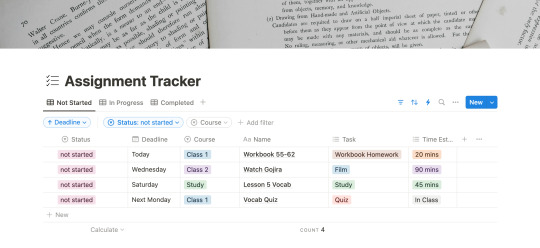
notion:
I am not a notion girlie, but I can't find an app that lets me build databases the way notion does. at least not one I like. I am a productivity app enthusiast so i've tried just about all of them and notion just works the best. Here is the template I use to keep track of my assignments. It is a mix of StudyWithAra's template and Notion's Assignment Tracker. The image above is the template I've made available for all of you! There are automations set up (the lightening icon), but I think everything is pretty self explanatory? if you have any questions don't hesitate to reach out.
edit: I have added a new section called "treats" to the database, to help motivate me to finish more of my work. I should add that this system is what I have developed while struggling to manage my chronic illnesses.
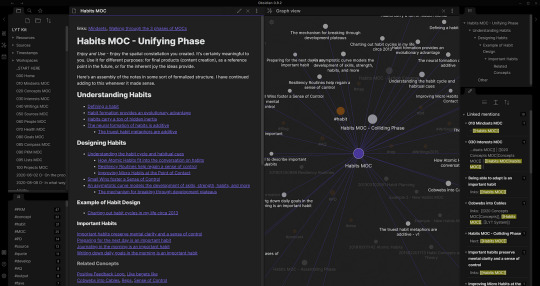
obsidian:
my one true love. i can wax poetic about why this is just a superior notetaking app, but that will be for a later post. for now, think of obsidian as a wikipedia database for all your notes. it allows for tags and backlinks and search and callouts... its amazing. love it there. uhm. a bit of a learning curve, but again a whole post on obsidian upcoming. here is a bit of an intro video for obsidian for students that I often return to. will reveal my obsidian notes in that post I'm working on.
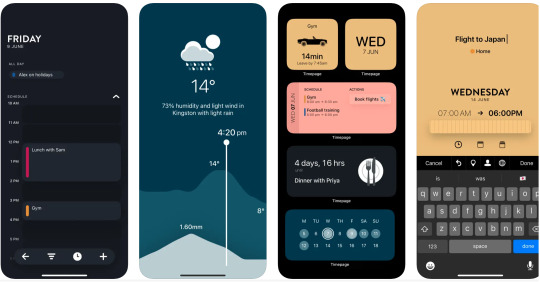
timepage:
if you love stationery you might be familiar with Moleskine. they've built this wonder suite of productivity tools and timepage is the calendar app. I use this on my phone! its everything a calendar app should be and more. its super cute and functional and customizable. I use google calendar to create different calendars that i've color coded to correspond to different areas of my life. i use a couple different calendar apps but timepage is my school calendar. it tells me when to leave for class, how to get there, and how long i have to rest/study/eat between my classes. it shows the weather, alerts you of rain, and did i mention its cute?
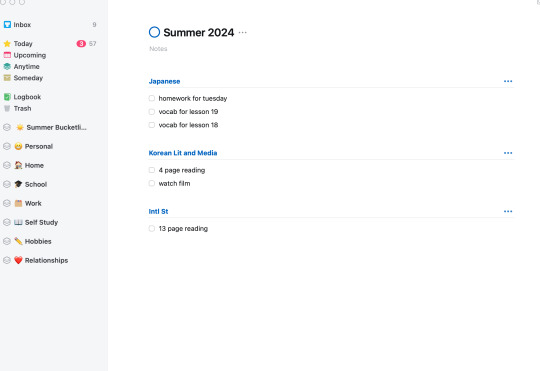
things:
the adhd/depression/anxiety struggle is real. I have 101 different apps to tell me what to do and when. things is another one of those apps. one of my lovely friends purchased the mac app for me and it has been a game changer. i use things to organize my entire life, but in the screenshot above you'll see my school list. when notion is too overwhelming or i need to break down things a bit more, i use things.

youtube:
here are some youtube channels I recommend for motivation, for aesthetics, for background noise 1, 2, 3, for body doubling...
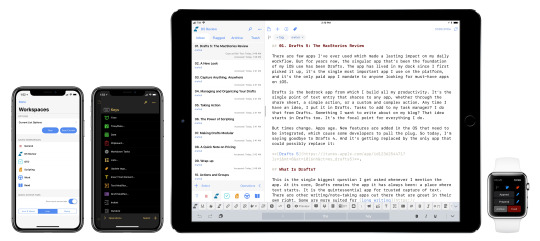
drafts:
cute little app. great for quick notes and also uses markdown so easy to copy and paste between drafts and obsidian. opens and closes quickly and syncs between your mac and phone for free! I write my speeches in here and also those last minute things your professor says after you've already put away your notebook.
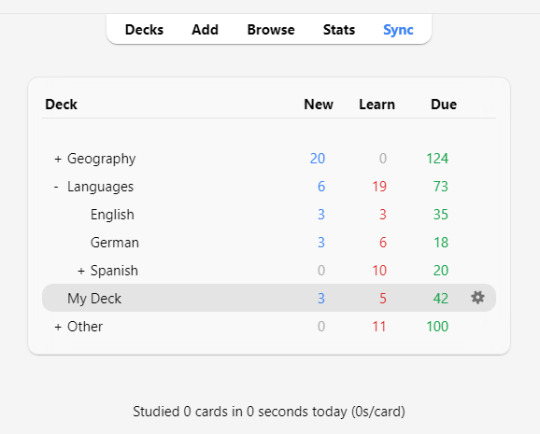
anki:
just started using this because i am in desperate need for spaced repetition. i bought and set up a small remote using this video to help move through the flashcards faster. i am also terribly lazy so we definitely downloaded premade cards instead of making our own. still need to do a bit more research to be able to use this software properly, but it is good enough for now. I am supplementing this app with the flashcard app below.
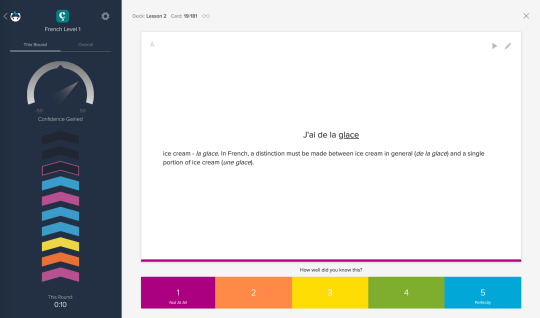
brainscape:
i use this to learn whatever I am studying. recently it has been vocab and kanji, but I imagine I might add in grammar cards at some point too. if you are familiar with anki, brainscape has a similar system for "learning", meaning you rank the card after seeing the answer, deciding for yourself how well you know the material. I can also download the decks I make to use during my commute so that is super helpful. And it's free (with a subscription upgrade available)!
Supplies:
as for material supplies, you'll find some of my favorites below:
kokuyo campus semi B5 - 5 mm graph
kokuyo campus semi B5 - dotted 6 mm rule
zebra sarasa gel pen .07/.05
pentel energel .07/.05
pilot g2 .07/.05
zebra mildliners
bic mechanical pencils in .07
twsbi fountain pen medium/extra fine
platinum carbon black ink
hobonichi cousin
System:
okay so i'm not quite sure how to explain this in a way that makes sense, but i shall attempt it. the system as it stands has a few steps.
move weekly assignments and such from the syllabi to Notion
add due dates and deadlines into Calendars
move tasks to Things
plot study schedule onto Calendars
write essays using notes i wrote in Obsidian during class
study for Japanese using Brainscape and Anki for memorization
practice Kanji and writing in kokuyo campus notebooks
write scripts, quick notes, etc., using Drafts
migrate things from Drafts to Docs, Obsidian, Calendars, or Notion
commence studying using YouTube as background noise
---
that's all for now. I'm still working on the next few posts in this series, but I hope this is helpful or at the very least somewhat entertaining.
wishing y'all the best,
Neith
#studyblr#writing#productivity#studying#studyspo#study motivation#apps#neithliveshere#that girl#organization#organizing#notion#university#self study#disability
16 notes
·
View notes
Text
1. Structural Framework of the Privilege Visa System
1.1 Legislative Foundations
Established under Royal Thai Police Order No. 327/2557 (2014)
Administered by Thailand Privilege Card Company Limited (TPC), a subsidiary of the Tourism Authority of Thailand
Operates parallel to but distinct from the Elite Visa program
1.2 Program Evolution
2014 Launch: Initial 5-year membership structure
2019 Restructuring: Introduction of tiered benefits system
2023 Enhancements: Digital integration and expanded concierge services
2. Comprehensive Benefit Structure
2.1 Immigration Advantages
Dedicated Immigration Channel: 24/7 access at 8 international airports
Multiple Re-entry Permit: Embedded in visa validity
90-Day Reporting: Optional (can be handled by TPC staff)
2.2 Lifestyle Concierge Services
Real Estate Acquisition Support: Curated property portfolio access
Education Placement: Partnership with 17 international schools
Medical Coordination: Priority at 38 partner hospitals
2.3 Financial Infrastructure
Thai Bank Account: Expedited opening with minimum deposit waiver
Tax Advisory: Complimentary 10-hour annual consultation
Currency Exchange: Preferred rates at Siam Commercial Bank
3. Eligibility & Application Scrutiny
3.1 Vetting Criteria
Financial Health Check:
Liquid assets verification (minimum THB 3M equivalent)
Source of funds audit
Background Clearance:
Interpol database cross-check
Thai security agency review
3.2 Document Requirements
Primary Applicant:
10-year passport history
Certified financial statements
Health insurance (USD 100,000 coverage)
Dependents:
Legalized marriage/birth certificates
Academic records (for student dependents)
3.3 Approval Timeline
StageDurationKey ConsiderationsPreliminary Screening7-10 daysDocument completeness checkFinancial Verification15-20 daysBank confirmation processSecurity Clearance30-45 daysEnhanced for certain nationalitiesFinal Issuance5 daysCard production and delivery
4. Tax & Legal Implications
5.1 Residency Status
Non-Tax Resident: For members spending <180 days/year
Tax Resident: Automatic after 183 days with additional reporting
4.2 Asset Management
Property Ownership: Condo purchases permitted under foreign quota
Investment Vehicles: Access to SET through special foreign investor accounts
4.3 Inheritance Planning
Will Registration: Mandatory for property holdings
Succession Tax: 10% on Thai-situs assets exceeding THB 100M
5. Operational Realities & Limitations
5.1 Practical Constraints
Work Prohibition: No employment rights without separate work permit
Business Activities: Passive investment only
Political Activities: Complete restriction
5.2 Service Level Agreements
Response Times:
Emergency: 30 minutes
Standard: 4 business hours
Guarantees:
Airport processing within 15 minutes
Medical appointment scheduling within 24 hours
6. Comparative Analysis with Competing Programs
ParameterThailand GOLDMalaysia MM2HUAE Golden VisaMinimum StayNone90 days/year1 day every 6 monthsHealthcareTHB 500K annual creditMandatory insurancePremium coverageEducation15% tuition discountLocal school accessInternational optionsPath to PRNoAfter 10 yearsAfter 5 years
7. Strategic Utilization Framework
7.1 Optimal User Profiles
High-Net-Worth Retirees: Age 50+ with global income streams
Global Nomads: Location-independent entrepreneurs
Family Offices: Multi-generational wealth management
7.2 Financial Optimization
Currency Hedging: THB-denominated asset allocation
Tax Year Planning: Residency day counting system
Insurance Structuring: International policy portability
8. Emerging Program Developments
8.1 2024 Enhancements
Digital Nomad Add-on: Remote work endorsement (Q3 rollout)
Crypto Wealth Verification: BTC/ETH acceptance for qualification
Regional Hub Access: Expanded services in Chiang Mai and Phuket
8.2 Pending Regulatory Changes
Family Office Recognition: Special provisions under discussion
Art Import Privileges: Proposed duty-free allowances
Yacht Registration: Streamlined process for members
9. Critical Evaluation & Recommendations
9.1 Value Proposition Assessment
Strengths:
Unmatched concierge infrastructure
Banking and financial access
Healthcare coordination
Weaknesses:
No path to permanent residency
Rigid membership tiers
Limited business activity
9.2 Implementation Checklist
Pre-Application:
6-month financial trail preparation
Dependent document legalization
Active Membership:
Annual benefit utilization audit
Tax residency monitoring
Renewal Planning:
180-day advance evaluation
Tier upgrade analysis
Final Verdict:
The GOLD membership represents Thailand's most sophisticated non-immigrant residency solution for affluent individuals prioritizing lifestyle quality over economic activity rights. While not a pathway to citizenship, its operational advantages and service infrastructure remain unparalleled in Southeast Asia for those meeting the financial thresholds.
#thailand#immigration#thai#visa#visainthailand#thaivisa#thailandvisa#thailandprivilegevisa#privilegevisainthailand#thailandprivilegevisagoldmembership#thaipr#immigrationinthailand#thaiimmigration
4 notes
·
View notes
Text

Trish Millines Dziko (1957) is the co-founder and Executive Director of the Technology Access Foundation. A native of New Jersey, she focused on college and became a first-generation college student. She made history by becoming the first woman to be awarded a full basketball scholarship for Monmouth College. She received her BS in Computer Science.
She spent 15 years working in the high-tech industry as a software developer, manager, and consultant as well as a database designer in such industries as military weapons, business systems, communications, and medical equipment.
She became one of the early employees at Microsoft Inc. She became active in promoting awareness of the importance of diversity in the corporate world. She became a co-founder of the Technology Access Foundation, a Seattle-based organization designed to provide science, technology, engineering, and mathematics skills to children of color. She became the full-time TAF Executive Director. As one of the young Microsoft millionaires at 39, She contributed over $150,000 to establish TAF.
TAF’s programs seek to increase mathematical and literacy competencies for K-8 students through project-based activities that use technology as a tool for learning in an after-school environment. Each year about 70 teenagers enroll in the Technical Teens Internship Program which includes courses in programming, website development, networking, and career development skills. The program provides job-readiness training, college entrance preparation, and paid summer internships with local corporations or small businesses for practical experience. In addition, about 200 five to twelve-year-olds take computer classes to enhance their reading, math, critical thinking, and problem-solving skills. Since its founding on October 1, 1996, TAF has taken the lead in preparing African Americans and other students of color for training in science and technology fields in colleges and universities.
She received an Honorary Doctor of Humane Letters from Seattle University. She continues to guide the Technology Access Foundation. #africanhistory365 #africanexcellence
7 notes
·
View notes
Text
Student Database Management System Software
Student database management system uses a digital tracking system to maintain a record of all the students. It enhances productivity and student success. For more information please visit us at https://www.academiaerp.com/blog/top-13-reasons-institutions-should-use-student-database-management-software/
0 notes
Text
Top B.Tech Courses in Maharashtra – CSE, AI, IT, and ECE Compared
B.Tech courses continue to attract students across India, and Maharashtra remains one of the most preferred states for higher technical education. From metro cities to emerging academic hubs like Solapur, students get access to diverse courses and skilled faculty. Among all available options, four major branches stand out: Computer Science and Engineering (CSE), Artificial Intelligence (AI), Information Technology (IT), and Electronics and Communication Engineering (ECE).
Each of these streams offers a different learning path. B.Tech in Computer Science and Engineering focuses on coding, algorithms, and system design. Students learn Python, Java, data structures, software engineering, and database systems. These skills are relevant for software companies, startups, and IT consulting.
B.Tech in Artificial Intelligence covers deep learning, neural networks, data processing, and computer vision. Students work on real-world problems using AI models. They also learn about ethical AI practices and automation systems. Companies hiring AI talent are in healthcare, retail, fintech, and manufacturing.
B.Tech in IT trains students in systems administration, networking, cloud computing, and application services. Graduates often work in system support, IT infrastructure, and data management. IT blends technical and management skills for enterprise use.
B.Tech ECE is for students who enjoy working with circuits, embedded systems, mobile communication, robotics, and signal processing. This stream is useful for telecom companies, consumer electronics, and control systems in industries.
Key Differences Between These B.Tech Programs:
CSE is programming-intensive. IT includes applications and system-level operations.
AI goes deeper into data modeling and pattern recognition.
ECE focuses more on hardware, communication, and embedded tech.
AI and CSE overlap, but AI involves more research-based learning.
How to Choose the Right B.Tech Specialization:
Ask yourself what excites you: coding, logic, data, devices, or systems.
Look for colleges with labs, project-based learning, and internship support.
Talk to seniors or alumni to understand real-life learning and placements.
Explore industry demand and long-term growth in each field.
MIT Vishwaprayag University, Solapur, offers all four B.Tech programs with updated syllabi, modern infrastructure, and practical training. Students work on live projects, participate in competitions, and build career skills through soft skills training. The university also encourages innovation and startup thinking.
Choosing the right course depends on interest and learning style. CSE and AI suit tech lovers who like coding and research. ECE is great for those who enjoy building real-world devices. IT fits students who want to blend business with technology.
Take time to explore the subjects and talk to faculty before selecting a stream. Your B.Tech journey shapes your future, so make an informed choice.
#B.Tech in Computer Science and Engineering#B.Tech in Artificial Intelligence#B.Tech in IT#B.Tech ECE#B.Tech Specialization
2 notes
·
View notes
Text
FITR Academy Preview: Rapier playbook mods
In FITR Academy, you assume the role of students pursuing a magical combat education at the Academy. Inspired heavily by RWBY and Hunter x Hunter, FITR Academy sees players defined by their Weapon Playbooks and a magical gift known as a Spark.
I've been recently plugging away at finishing up playbook designs for the first release on https://quaternion-j.itch.io/. This preview is for Modifications for the Rapier playbook.
Weapon playbooks define your character's starting skills, talents, and mods. Skills and Talents reflect what the wielder of the weapon can do; Mods depict special abilities and tweaks to the weapon itself. So Rapier Mods are mechanisms, add-ons, or some other tool that allow you to customize your Rapier and give it some additional functionality.
I won't be providing any additional rules context at this time; this post is mainly to tease you with what systems and ideas are lurking under the hood, and to get your imagination turning.
Crystalized Aether Reserves. Your rapier gains 1 Charge. Spend 1 charge to refresh 2 aether. [▲]
Purpose. Your weapon has a secret message engraved for your eyes only. Once per mission, in a moment of desperation, despair, or doubt, you may take this message to heart and clear 2 stress. [▲]
Holodex. This elaborate, small prism looks solid at casual inspection, but is in fact almost entirely hollow, its interior carved and etched to provide thousands of square meters of surface area for aetherolectric information. You can spend 1 aether to activate the holodex and Gather Information as if you had immediate access to a vast library or database. [▲▲]
Ampule of Soulsteel Salts. Your Rapier has the necessary component for creating Duelists' Wards, magically-designated areas for 1-on-1 duels. You can create such a ward once per mission. When you choose to create your Duelists' Ward, draw a ritual circle, spend 2 aether, and choose an opponent among those encircled. Everyone else is expelled, and the two of you cannot leave until the duel is complete. If no conditions for the duel are agreed upon, the duel will be to the death. [▲▲▲]
Personal Assistive Intelligence. Your Rapier is modified with a fairly complex A.I. assistant to help manage your time at the Academy. When you acquire this mod, assign your P.A.I. to the School, Training, or Social Phase. You gain the following benefit during that next Phase:
School Phase: make +1 progress on any learning clock;
Training Phase: gain potency versus everything;
Social Phase: gain an additional downtime action.
You can't re-assign your P.A.I. until you've completed a full play cycle (one School, Training, and Social phase each). [▲▲▲▲]
#fitr academy#fitr academy previews#forged in the dark#fitd#indie ttrpg#itch is down rn but that's fine probably
4 notes
·
View notes
Text
Caleb Ecarma and Judd Legum at Popular Information:
Several of Elon Musk’s associates installed at the Office of Personnel Management (OPM) have received unprecedented access to federal human resources databases containing sensitive personal information for millions of federal employees. According to two members of OPM staff with direct knowledge, the Musk team running OPM has the ability to extract information from databases that store medical histories, personally identifiable information, workplace evaluations, and other private data. The staffers spoke on the condition of anonymity because they were not authorized to speak publicly and feared professional retaliation. Musk Watch also reviewed internal OPM correspondence confirming that expansive access to the database was provided to Musk associates.
The arrangement presents acute privacy and security risks, one of the OPM staffers said. Among the government outsiders granted entry to the OPM databases is University of California Berkeley student Akash Bobba, a software engineer who graduated high school less than three years ago. He previously interned at Meta and Palantir, a technology firm chaired by Musk-ally and fellow billionaire Peter Thiel. Edward Coristine, another 2022 high school graduate and former software engineering intern at Musk’s Neuralink, has also been given access to the databases.
Other Musk underlings embedded at OPM following President Donald Trump’s inauguration include the agency’s new chief of staff, Amanda Scales, who until January was a human resources staffer at xAI, Musk’s artificial intelligence firm, and Brian Bjelde, who has spent the past 21 years at Musk's SpaceX, including the last 10 leading the human resources department. They are joined by Gavin Kliger, a former Twitter software engineer serving as a special advisor to the director of OPM, and Riccardo Biasini, a former software engineer at Musk’s tunneling venture, the Boring Company. OPM did not respond to a request for comment. Shortly after Trump took office, OPM installed Greg Hogan to serve as its new chief information officer (CIO). Hogan was tapped to replace OPM CIO Melvin Brown, who had accepted the job less than a month ago. The civil servants who oversee the OPM’s information technology services were then instructed to provide access to Musk's associates, according to the OPM staffers who spoke to Musk Watch. One of the OPM staffers received an email from the agency’s new leadership instructing them to give Musk’s team “access [to] the system as an admin user" and "code read and write permissions." “They have access to the code itself, which means they can make updates to anything that they want,” the staffer explained. USAJOBS, the federal government’s official hiring site, was one of the systems that Musk's associates were given access to. The database stores personal information — Social Security numbers, home addresses, employment records — provided by private individuals who have applied for federal jobs, regardless of whether the applicants went on to work for the government. Musk’s aides were also given access to the OPM’s Enterprise Human Resources Integration (EHRI) system. Contained within the EHRI are the Social Security numbers, dates of birth, salaries, home addresses, and job descriptions of all civil government workers, along with any disciplinary actions they have faced. “They’re looking through all the position descriptions… to remove folks,” one of the OPM staffers said of Musk’s team. “This is how they found all these DEI offices and had them removed — [by] reviewing position description level data.” Other databases Musk’s team has access to include USA Staffing, an onboarding system; USA Performance, a job performance review site; and HI, which the government uses to manage employee health care. “The health insurance one scares me because it's HIPAA [protected] information, but they have access to all this stuff,” the OPM staffer noted.
[...] A new server being used to control these databases has been placed in a conference room that Musk’s team is using as their command center, according to an OPM staffer. The staffer described the server as a piece of commercial hardware they believed was not obtained through the proper federal procurement process. There is a legal requirement that the installation of a new server undergo a Privacy Impact Assessment (PIA), a formal process to ensure the change would not create any security vulnerabilities. But in this instance, the staff believes there was no PIA. “So this application and corresponding hardware are illegally operating,” they added. On Friday, Reuters reported that some senior civil servants have been blocked from accessing the EHRI and other OPM systems, making it difficult for career OPM employees to know what Musk’s team has been examining or modifying. In the same report, the outlet revealed the team had moved sofa beds into the agency's headquarters to continue their work around the clock.
This should be a major national news scandal.
Elon Musk and the underlings he put in place at the Office of Personnel Management (OPM) have jeopardized data privacy and national security.
#Elon Musk#DOGE#Department of Government Efficiency#Trump Administration#Office of Personnel Management#USA Peformance#HIPAA#Enterprise Human Resources Integration#Amanda Scales#Data Breach#Privacy Impact Assessment#Data Privacy#Musk Coup
9 notes
·
View notes